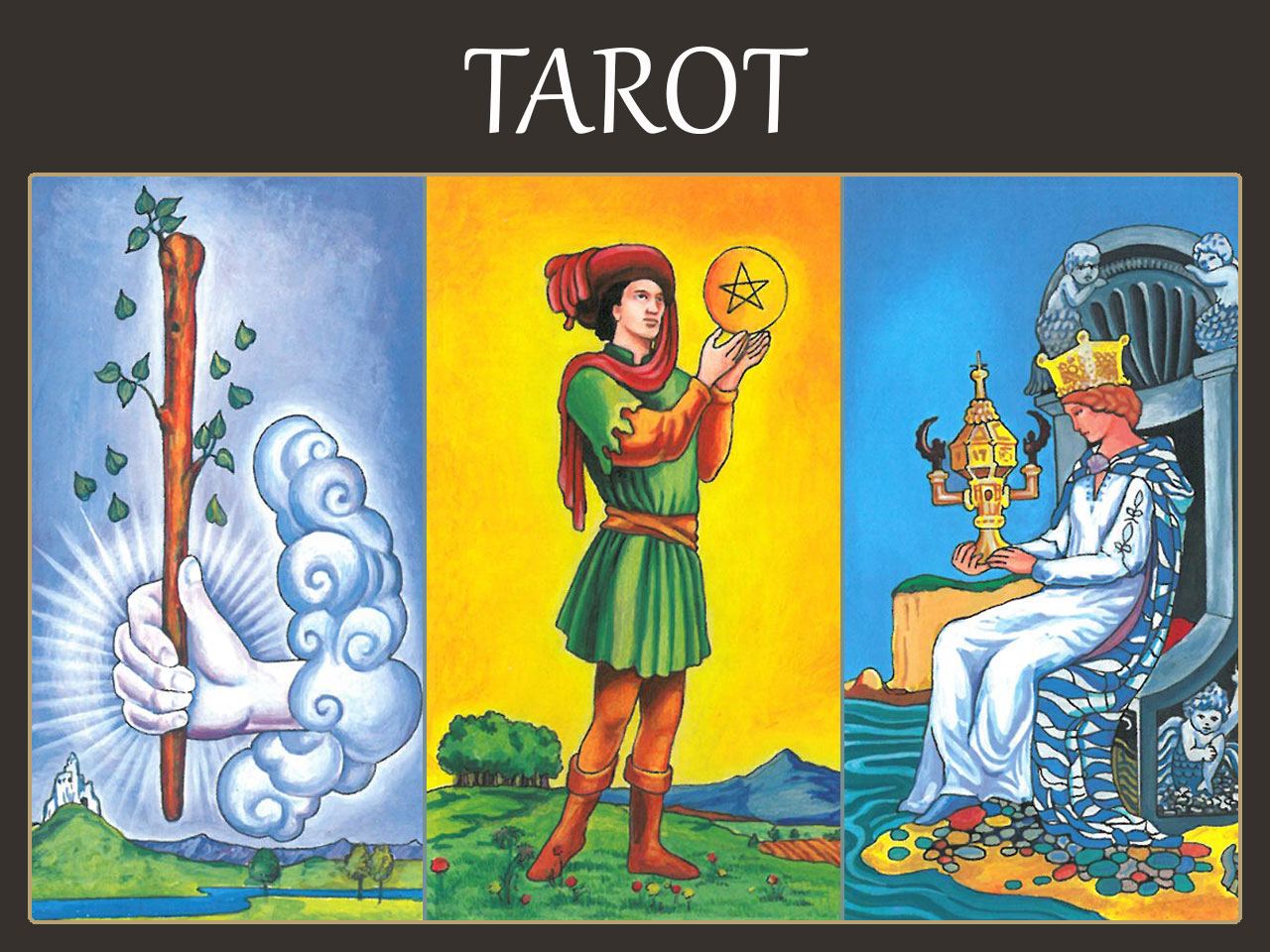You’re interested in learning how to read tarot cards. Hooray! The world needs more real, accurate, and compassionate tarot readers!
Maybe you’ve heard about someone who had a professional reading. As the querent (questioner of the Tarot) babbles on about their experiences with their favorite Tarot readers, a smile conveys their awe. The querent shares with you their amazement at the reader’s accuracy, swearing they are a die-hard skeptic. You can’t help but wonder what kind of preternatural powers are at play! Their experience stirs your interests.
Now you want a tarot card reading. In fact, in the back of your mind you’re already thinking of learning how to read the tarot yourself. Hearing how a Tarot reader can seem to know things without having any way of knowing makes you curious. You want to know how this Tarot reading thing works!
Your curiosity prompts you to visit a tarot reader or two. Each reading surprises you. It’s impressive when a reader has the foreknowledge and insight into aspects of your life! A big part of you wants to harness this ability too! You have the burning desire to learn how to read the Tarot for yourself and others! You find yourself at the start of a new journey.
The Journey of the Fool! (The reference has nothing to do with your wisdom). It allows you to explore the main archetypes in the Major Arcana. But, we’re getting ahead of ourselves here. Let’s look at what it takes to learn about the Celtic Cross Spread and how to read the Tarot.
How to Read Tarot Cards Table of Contents
- Your Study Deck for Learning How to Read the Tarot
- Connecting with Your Deck for Accurate Celtic Cross Readings
- Free Comprehensive Online Resources on How to Read Tarot
- Time to Hit the Books: Studying the Celtic Cross and Alternative Spreads
- Memorizing the Basic Card Meanings and Tarot Card Study Methods
- Three Card Readings and Celtic Cross Spread Alternatives
- How to Read the Tarot Cards – Various Means of Card Interpretation
- How to Read the Tarot’s Major and Minor Arcana
- How to Read the Tarot Suits
- How to Read the Tarot’s Upright or Reverse Cards
Tarot Reading and Reader Stereotypes
Admit it though; didn’t you expect to visit a Tarot reader to seem mystical or mysterious? Come on now There’s nothing wrong with admitting it!
The imagined picture:
A flashing neon sign in screaming the words “PSYCHIC READING,” in brilliant blue. There’s a Hamsa (a protection symbol with a hand with an eye in the palm) in a large window. You breathe in the electric atmosphere. Just as you expected, there are oddities all around the room you enter.
You walk into a room that’s lit by candles for the most part. There’s a round table with candles, a crystal ball, and scented smoke billowing up from incense. The thick sage scent goes to your head. You take a seat at the table.
You hold your breath while waiting for an exotic dark-haired woman with equally dark eyes to appear (You think she secretly inspired the song “Witchy Woman,” by the Eagles)! She wears the latest bohemian fashions too. She enters the room, ready to announce the secrets of the universe!
Okay, while you might see a few of these things (or none), the truth is the media we encounter shapes our understandings and expectations. What’s also true is we are all likely watching way too many movies or TV shows! Chances are, you can get the most accurate, precise, and insightful reading from a man or a woman. Oh and guess what else; there’s no gypsy attire necessary!
Cast all stereotypical notions aside. Now, if you remain open to the task at hand, you will have an easier time learning how to read Tarot. It will take dedication on your part too. Learning how to read the Celtic Cross requires you learn about symbols. The first step, you must master the language of universal symbols and archetypes.

Best Tarot Decks for Learning Tarot
First, I’d like to take the time to recommend the use of the popular deck of Tarot cards if you are starting out as a reader. I must stress importance here. Why? Because, it will make it far easier for you to explore card meaning.
With a popular deck, like the Rider-Waite set, you’ll have plenty of resources available to you. It gives you freedom as you explore different ways of understanding card symbolism. There are lovely Rider-Waite Tarot decks too.
If you are looking for one with brilliant colors, try the Radiant Rider-Waite® Tarot. It is available from U.S. Games System Incorporated. The newer design of the 78-card deck presents with thinner outlines. It also has richer colors than previous decks.
Now, the beginner learning how to read tarot might experience disappointment here. Using a Rider-Waite deck to learn Tarot might seem limiting. This is true if they have already bought a deck with a different theme. I only recommend the Rider-Waite Tarot until you master the basics. Once you are comfortable with the cards and reading them on your own, then you can graduate to the use another deck.
Using a less common deck doubles study time. Then learning how to read the Celtic Cross Spread may frustrate new readers. It’s like this; think of learning how to read tarot as learning a new language. You must learn the basics of tarot language before you can translate it into another language.
Connecting With Your Tarot Cards

Once you have your deck, you can store it in a small black bag. Alternatively, you can wrap it up in some black cloth to ensuring nothing can fall out of the pack. The black material helps keep negative energies from your cards. Some readers keep their cards in a wooden box. A mirror box, which can reflect away negativity is also an option.
After you put the cards in the bag, slip them under your pillow. You must sleep with the cards under your pillow for three days, so you can gain a greater connection with them. Every time you feel as if your cards are not giving clear readings, you can cleanse them. Reconnecting with the cards is as easy as sleeping with the deck under your pillow again.
Keep your cards in a safe place when not in use. Make sure they remain wrapped in cloth or in a box. Put them where children cannot get to them. You also want no one else handling your cards without permission. When someone touches the cards, their energy can influence them. Ultimately, they can affect future reading accuracy without ever meaning to do so.
Free Comprehensive Online Resources on How to Read Tarot
Plenty of learning methods for how to read the tarot exist. So, you can choose the techniques that best suit your learning style. Below I’ll explore some various ways you can explore Tarot symbolism. We’ll also look at the pros and cons of each learning method. Again, mix and match the methods you think will help you gain the greatest understanding. There’s no one right way to master the art of how to read the Celtic Cross or alternative readings.
You’ll find plenty of online resources in relations to the Tarot and learn what every card means. I invite you to use the free and in-depth resources on Building Beautiful Souls. Here, you’ll find a detailed explanation of every card and its meaning.
You can access information on the history of the Tarot, different spreads and how to read them. The free information is an outstanding stepping stone to Tarot mastery! Explore each section of the Tarot. The Major Arcana, Minor Arcana, Suit of Swords, Suit of Cups, Suit of Pentacles, and the Suit of Wands are available.
Time to Hit the Books: Studying the Celtic Cross and Alternative Spreads
Yes, reading is important. I know some people can’t get enough of books. Other people can’t stand to read unless it is something passing on the Internet or a feature of a cereal box backing. (Even then boredom must reign before you find reading enjoyable). But, reading about card interpretation methods is among the best ways learn different perspectives. Consider it as an equation. Reading books on Tarot symbolism equals massive improvement in reading the Tarot!
Here are three books you’ll want to explore as you master the Tarot.
Here, I’ll leave one more note on learning Tarot and the importance of reading. The art of Tarot isn’t mastered through one course of study. Masters of the Tarot know they are taking on a course of lifelong study. The more you read, the more our perspective changes. Reading expands knowledge. Your interpretation style and understanding of symbols always under development.
Memorizing the Basic Card Meanings and Tarot Card Study Methods
Some Tarot readers choose not to memorize the meanings of each card. Instead, the reader creates a narrative from the images in the cards, appearing in a layout. This is the way to develop a strong understanding of card meaning. It is an intuitive method for reading the Tarot. New readers might feel uncomfortable starting out from scratch with the intuitive method. Your comfort when learning is important and don’t rush your Tarot education. Below are some alternative ways of learning Tarot:
Rote Memorization: I know… I can hear some of you gasping… boring, right? Well, that may be the case for some of us. But, there’re others who assimilate knowledge well through repetition.
More Methods for Learning How to Read Tarot
Work from a book. Use online resources. Commit basic card keywords or understandings to memory. All the practice will lead to the improvement when you want to learn how to read Tarot. Below are a few of the things you should do to ensure you remain an active learner. Remember; learning how to read the Celtic Spread is a beginning only. Your understanding of symbols endures a constant state of evolution. You are entering a lifetime of symbol mastery! Make sure you get in plenty of practice by performing readings.
Once you examine card meaning and how it applies to your daily life, work on examining the card’s design. Decode its imagery. But, but also take time to reflect on the numerology and zodiac correspondences. It will help you as you learn how to read Tarot spreads. How do these correspondences shape the meaning of the card’s initial interpretation? Following your one card reading, jot down some notes about what you think this card might mean. Now consider its meaning if it presents as a reversal.
Three Card Readings and Celtic Cross Spread Alternatives
When you become exceptional at the single card reading, consider any card for a yes/no response. Look at any card from the deck in the upright and reverse positions. What does the card imagery suggest?
Try to figure this out on your own for all 78 cards. You can then use a resource like an online website to find out if your decisions are correct. Narrow down the deck to those you did not get correct. Continue to work with them until you are familiar with the appropriate “Yes,” or “No” responses.
After graduating to “Yes/No” questions, “up the ante.” Interpret three-card past, present, and future full Celtic Cross layouts. This is an excellent time to sample a variety of Tarot spreads. Perform spreads on love, family relationships, friendships, and marriage. Do a reading on the shadow self. Practice alternative Tarot readings on your relationship with bosses and coworkers. As you learn how to read Tarot, you can also read on people in positions of authority. Enjoy yourself and practice each day. With every reading, take careful notes. You can refer to the reading later: This will allow you to assess every reading for its level of accuracy.
Also, make a note about how you felt about the reading afterward. Ask yourself did you feel confident about the reading, and if not, what did you doubt? Were you correct when you doubted the response? Track your successes so you can confirm your interpretative skill level.
Graduate to reading to friends and family. When you are comfortable, start readings for others, try to do this on your own without a book in hand. Have your relatives give you some honest feedback. You can also note if the reading resonates with the person you are doing the reading for as well.
How to Read the Tarot’s Major and Minor Arcana
While many of the contemporary Tarot decks consist of 78 cards, some decks have less or more. For this article, we will reference the 78 card Rider-Waite deck. Out of these 78 cards, 56 are Minor Arcana cards and 22 are the Major Arcana, with the word Arcana meaning “secrets.” Mostly, you’ll be using the entire deck to do a reading. But, you can also use the Major Arcana cards for an interesting layout about major events or life themes. But, the reading will lack material on day-to-day events or the mundane.
The Major Arcana runs and interesting narrative from The Fool (0) to the World (21). This span of cards are Trumps and the cards in the Journey of the Fool. Read the Major Arcana to see what kinds of upcoming challenges, obstacles, or life themes you’ll be facing. But, these cards will not necessarily define mundane events.
How to Read the Tarot Suits
The deck contains four suits including Cups, Wands, Swords, and Pentacles/Coins. You can examine a layout to determine different things based on the prevalence of one or more suits in a layout. Suits can show:
Wands = Communication
Swords = Strive and difficulty
Cups = The realm of emotions
Pentacles = Fertility, abundance, and money
The same cards might show a season in relation to a question relevant to time. Consider:
Wands/Rods (Spring)
Swords/Daggers (Summer)
Cups/Chalices (Autumn)
Pentacles/Coins (Winter)
Aces can also represent seasons. Each of the suits corresponds with a cardinal direction:
Wands/Rods (East)
Swords/Daggers (South)
Cups/Chalices (West)
Pentacles/Coins (Earth).
Please note: Some readers associate Wands with Summer/South and Swords with Spring/Air. Either method is correct providing the interpretation you derive produces an accurate narrative.
Court Cards: These are the Pages, Knights, Queens, and Kings of each suit. The Court Cards represents the physical and behavioral characteristics people. Some cards have zodiac signs as well.
Leapers: A leaper is a card that pops out of the deck during the act of shuffling it. There can be more than a single leaper. Some readers skip using the leaper. Others feel it is an important message for the querent. The message is one to read before all the cards. It may hold a theme for the reading.
How to Read the Tarot’s Upright or Reverse Cards
Upright or reverse: That is the question! Whether ‘tis nobler in our time to interpret the cards of chance upright or reversed, or to ignore the inversions all together, and by opposing them, miss out on the meaning entirely? (And yes, that is a play on Prince Hamlet’s soliloquy! Thank you, Shakespeare!)
You get a lot of flexibility when it comes to how you read the Tarot. This flexibility applies when reading reversals. Some readers read all cards in the upright position. Others prefer to read reversals as actual reversals.
With reversed cards, you might assume they mean the exact opposite upright cards., In fact, it can mean the opposite meaning. But, reversals can also symbolize potential blocks or obstacles. Some readers consider a reversal card as meaning the same as the upright position but on a subtle level.
Still, other readers consider reversals as a passing or fading energy. The reader will look at the symbolism upside down as if everything in the card is falling away or draining. Card reversals can symbolize the subconscious versus conscious thought. Finally, the reversal of cards can mean upset or an over-flow of emotions.
I hope the information shared here paves the way to your mastery of the Tarot. You are now on the road to learning how to read Tarot and the Celtic Cross Spread. Your ability to create fluid narratives from the universal symbolism will increase. I also hope you use your understanding to gain insight into your own soul’s journey. Learning how to read Tarot should be for the betterment of your life and the lives of others!
